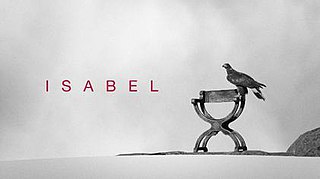Related Research Articles

Agustín García Calvo was a Spanish philologist, philosopher, poet and playwright.
José María Sánchez-Verdú is a Spanish composer.

José Luis Vega is a Puerto Rican poet.
Robert Murrell Stevenson was an American musicologist. He studied at the College of Mines and Metallurgy of the University of Texas at El Paso, the Juilliard School of Music, Yale University (MM) and the University of Rochester ; further study took him to Harvard University, Princeton Theological Seminary and Oxford University. He taught at the University of Texas and at Westminster Choir College in the 1940s. In 1949 he became a faculty member at the University of California at Los Angeles, where he taught until 1987. Stevenson is well known for having studied with Igor Stravinsky when he was young, and for later being a teacher of influential minimalist La Monte Young.

The Cancionero de Palacio, or Cancionero Musical de Palacio (CMP), also known as Cancionero de Barbieri, is a Spanish manuscript of Renaissance music. The works in it were compiled during a time span of around 40 years, from the mid-1470s until the beginning of the 16th century, approximately coinciding with the reign of the Catholic Monarchs.
The tono humano was one of the main genres of 17th Century Spanish and Portuguese music.
Concerto for Harpsichord, Flute, Oboe, Clarinet, Violin and Cello is a chamber concerto written for harpsichord and chamber ensemble by the Spanish composer Manuel de Falla in 1923–26. It was written for and premiered by Wanda Landowska, to whom the score is dedicated.
Juan Arañés was a Spanish baroque composer. His tonos and villancicos follow the style of those preserved in the Cancionero of Kraków.
Yul Narcizo Arzú Casildo is a Honduran footballer who play as goalkeeper for Liga Nacional de Fútbol de Honduras club Vida.

John Griffiths is a musician and musicologist specialised in music for guitar and early plucked instruments, especially the vihuela and lute. He has researched aspects of the sixteenth-century Spanish vihuela, its history and its music. He has also had an international career as a solo lutenist, vihuelist, and guitarist, and as a member of the pioneer Australian early music group La Romanesca. After a thirty-year career at the University of Melbourne (1980–2011), he now works as a freelance scholar and performer.
Benito Bello de Torices was a Spanish composer, maestro at the Convent of Las Descalzas Reales and professor of music at the Royal College of Pages of His Majesty, Madrid, during the reigns of Charles II and Philip V. His family was minor gentry. His surviving works include villancicos, estribillos.

Isabel is a Spanish historical fiction television series, directed by Jordi Frades and produced by Diagonal TV for Televisión Española. The series is based upon the reign of Queen Isabella I of Castile. It was broadcast on La 1 of Televisión Española from 2012 to 2014.
José Lidón, or Josef Lidón, or José Lidón Blázquez, born in Béjar, Salamanca on June 2, 1748, died in Madrid on February 11, 1827, was a Spanish composer, organist and conductor.
Juan Montón y Mallén was a Spanish composer and maestro de capilla of Segovia Cathedral. He was succeeded by Pedro Aranaz y Vides.
Marta Almajano (Zaragoza) is a Spanish soprano. She was part of Al Ayre Español from its foundation in 1987 until 2004, and often in connection with this group, been part of the revival of baroque zarzuelas such as “Tetis y Peleo” by Juán de Roldan, “Acis y Galatea” of Antonio de Literes, and “Viento es la dicha de Amor” by José de Nebra. She teaches singing at the Escuela Superior de Música de Cataluña, in Barcelona.
Jacinto Valledor y la Calle was a Spanish composer of theatre music and tonadillas. Early success in Barcelona in the 1780s turned to difficulties after a move to Madrid where he was in the shadow of Pablo Esteve. 25 of his tonadillas survive.

El ministerio del tiempo is a Spanish fantasy television series created by Javier and Pablo Olivares and produced by Onza Partners and Cliffhanger for Televisión Española (TVE). It premiered on 24 February 2015 on TVE's main channel La 1. The series follows the exploits of an investigative team in the fictional Ministry of Time, which deals with incidents caused by time travel that can cause changes to the present day.
The Cancionero de Turin or Cancionero Musical de Turin is a musical manuscript that contains Spanish secular polyphonic works from the period between the end of the 16th century and the beginning of the 17th century, in the transition period between the Renaissance and the Baroque eras.
The Cancionero de Segovia or Cancionero Musical de Segovia (CMS), also known as Cancionero of the Segovia Cathedral, is a manuscript containing Renaissance music from the end of the 15th century and beginning of the 16th century. It contains a wide repertoire of works by mainly Spanish, French and Franco-Flemish composers. It is kept at the Segovia Cathedral Archives.
Francisco José Olivares was a Spanish composer and organist who lived in the late eighteenth century and early nineteenth century. Throughout his musical career, he worked in Cuenca, Orihuela and Salamanca.
References
- ↑ Historia de la música Johannes Wolf, Higini Anglès, Johannes Wolf - 1949 "Rafael Coloma (1587-93), Pedro Riquet (1598-1616),"
- ↑ La Capilla de Música de la Catedral de Orihuela: las composiciones Page 679 Pérez Berná, Juan - "Robledo cita la presencia de este estribillo en composiciones religiosas de Pedro Riquet y José de Torres.
- ↑ Revista de musicología Volume 10, Issues 1-2; Volume 10, Issues 1-2 Sociedad Española de Musicología, Sociedad Española de Musicología - 1987 "De 1640 data el romance al Santísimo Sacramento Ya es tiempo de recoger de Pedro Riquet, cuyo estribillo Toca, toca, toca a recoger muestra un parecido notable con el Al arma, guerra del romance de Juan Blas de Castro."